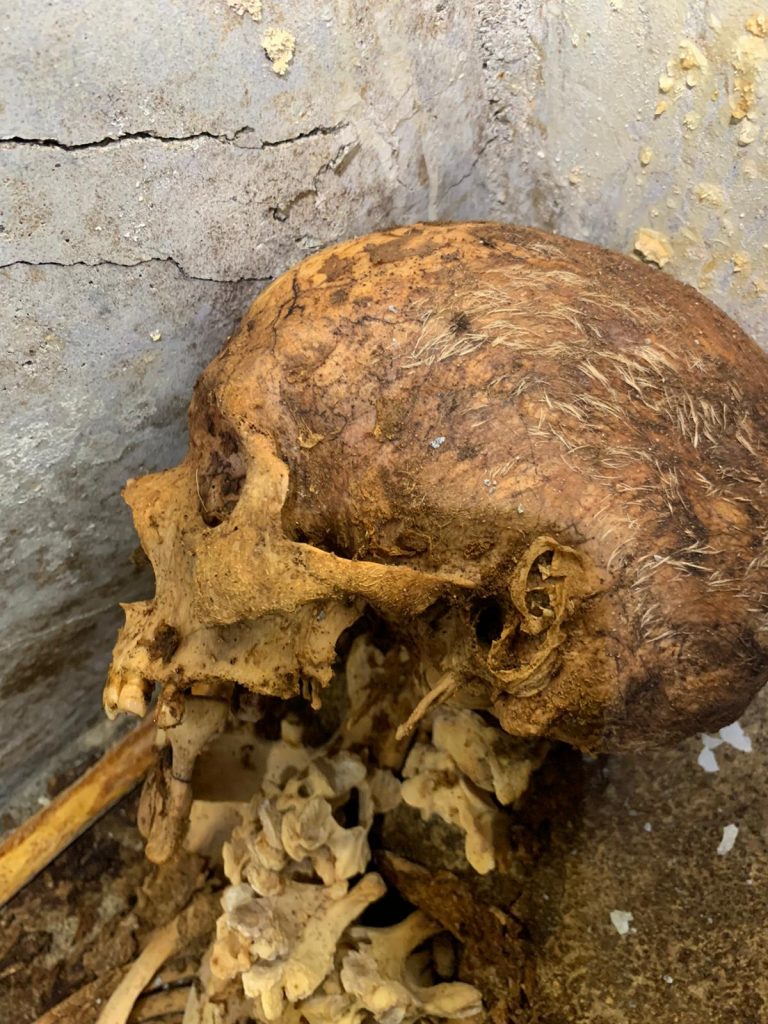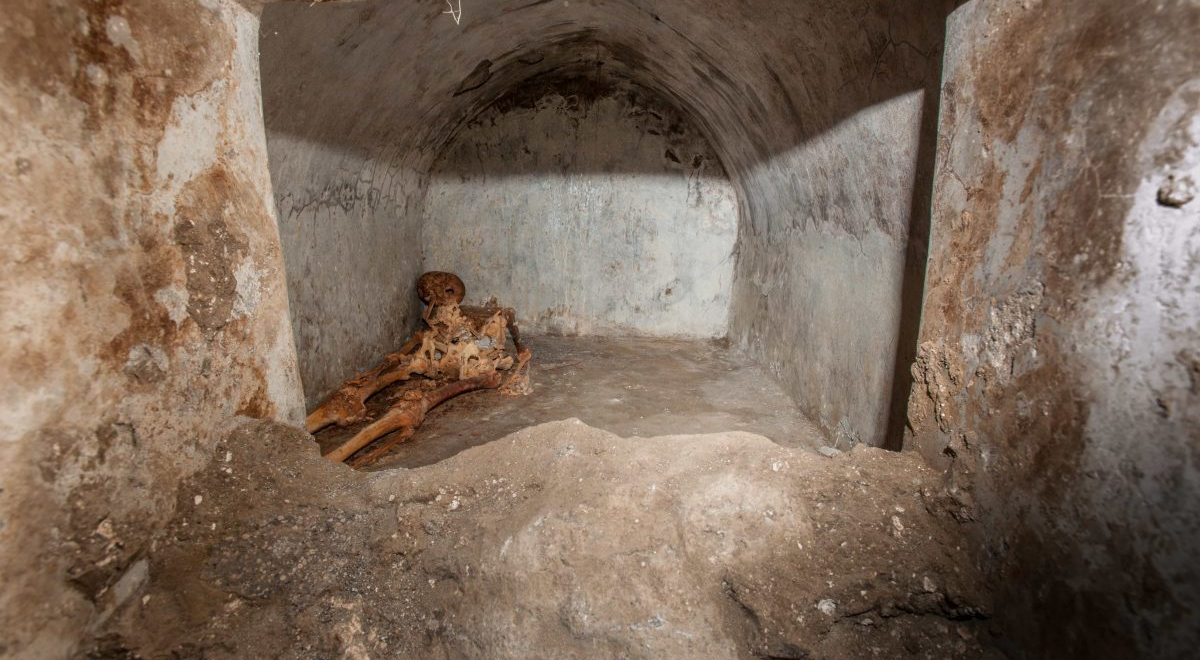The body, along with hair, bones and a fragment of the ear, was found in the tomb of the time immediately preceding the destruction of the city. It is unique in that it has its roots in the times when the Romans burned the corpses of the dead.
According to the Pompeii Archaeological Park, the remains are some of the best-preserved skeletons ever found in the city that fell victim to the eruption of Vesuvius in 79 AD. They were found in a tomb located in the necropolis of Porta Sarno, east of the center of the ancient agglomeration. The body is in such good condition, probably due to the fact that the tomb was sealed for almost 2,000 years, but researchers do not rule out that the remains were mummified.

“I still don’t know if the partial mummification of the deceased was the result of a deliberate operation or not,” explains Professor Lawrence Alapon of the University of Valencia. “Textile analysis can provide additional information in this regard. We know from sources that some fabrics, such as asbestos, were used for embalming. Even for people like me who have specialized in funeral archeology for some time, the extraordinary wealth of information this tomb offers, from inscriptions to burials, osteological finds, and painted facades, is exceptional. ”
He was about 60 years old at the time of his death. Two cremation urns were also found in the crypt, one of which belonged to a woman named Novia Amabilis.
Who is a mummified man?
The inscription on the front of the tomb suggests that the remains of this man belong to Mark Venerius Secundio. We know a lot about him thanks to the information on the wax tablets belonging to the local banker Cecilia Mona Lisa. Mark Venus in his youth was a slave and guardian of the temple of Venus. After his release, he reached a high financial and social position. He was a member of the board of Augustians – priests who cared about the imperial state cult in the city. He also organized a four-day festival “Greek and Latin fools.”

“Ludi graeci” should be understood as a representation in Greek, says Gabriel Zuchtrigel, director of the Pompeii Archaeological Park. – This is the first clear evidence of ideas in Pompeii in Greek. In the multiethnic Pompeii of the early imperial era, where the Greek language, then the “lingua franca” of the eastern Mediterranean, was used alongside Latin. The fact that the performances were conducted in Greek testifies to the lively and open cultural climate of ancient Pompeii.
It is possible that then Mark Venus Secundio or his ancestors were natives of Greece. This could explain the atypical burial for Pompeii at the time. During the early republic and the early empire, the Romans cremated adult dead (buried only children).

